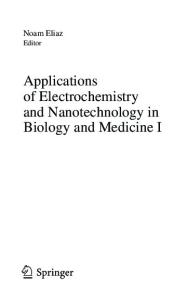Applications of Diamond Thin Films in Electrochemistry
- PDF / 2,699,608 Bytes
- 5 Pages / 576 x 777.6 pts Page_size
- 37 Downloads / 351 Views
resistivities as low as 0.001 11 cm. Nitrogen, the group-V element adjacent to carbon, dissolves substitutionally in diamond. However the donor level is deep, ~1.4-eV below the conduction band, and does not provide useful n-type conductivity. Recent studies show that phosphorus gives a donor level about 0.5-eV below the conduction band, sufficiently shallow to provide measurable room-temperature conductivity.'2'53 The structural and chemical robustness of diamond arises from its atomic density—the highest of any terrestrial material54—and its strong, directional covalent bonding. These characteristics give rise to diamond's extreme Debye temperature, hardness, and elastic modulus, which are greater than any other solid. Furthermore diffusion rates in diamond are extremely low. Diamond is very stable in reducing environments but can be oxidized and will spontaneously revert to the stable carbon phase, graphite, when heated to high temperatures at pressures below the diamond/graphite equilibrium line. Diamond can also be etched by strong, oxidizing acids and by molten KOH, and is dissolved by liquid Ce, Fe, and Ni. As-grown diamond surfaces are typically hydrogen-terminated from atomic hydrogen in the growth environment.55"57 The fraction of bare surface sites increases with temperature.55"57 Therefore cooling the sample under an atomichydrogen ambient is essential for maintaining the hydrogen termination. The hydrogen termination is stable in air at room temperature, and electrodes will remain hydrophobic for months in contact with air. Diamond electrodes are typically polycrystalline thin films grown on Si, Mo,
or W substrates. Single-crystal diamond electrodes have been obtained by growing a thin boron-doped layer on singlecrystal diamond substrates. 3MIS8 The growth of diamond is accomplished by chemical vapor deposition, typically from 0.5% CH4 in H2 by hot-filament or microwave plasma-assisted methods.59"63 The boron doping agent is usually added through small amounts of diborane, trimethyl boron, or B2O3 in the source gases, but solid-state boron sources also have been used successfully. A polycrystalline, boron-doped diamond thin-film electrode grown on a 250-/j,m tungsten wire appears in Figure 1. Boron-doped, single-crystal diamond electrodes appear on the cover of this issue. The blue color arises from absorption introduced by the boron, which is the source of color in the famous Hope diamond. Stability of Diamond Electrodes A striking characteristic of diamond electrodes is their stability compared to conventional carbon electrodes. Diamond films are stable during anodic polarization in acidic fluoride,12 alkaline,30 acidic chloride,3'31 and neutral chloride media.37/3s For example, chlorine can be evolved on diamond thin films in 1.0 M HNO3 + 2.0 M NaCl at a current density of 0.5 A/cm2 for up to 12 h with no evidence of damage.31 Glassy carbon catastrophically fails within two min of exposure to these conditions. Ozone can be generated in H2SO4 at boron-doped diamond thin films using current densities
Data Loading...











